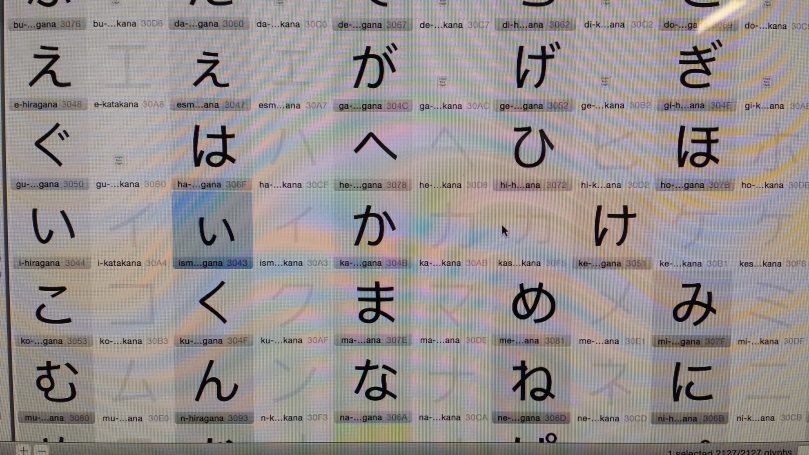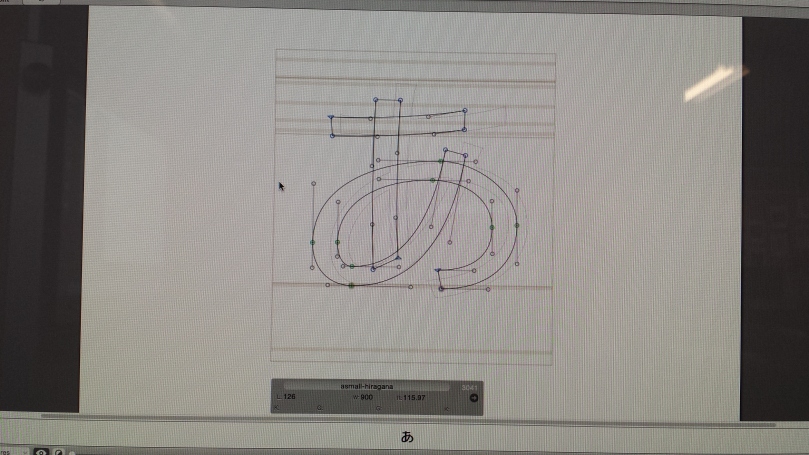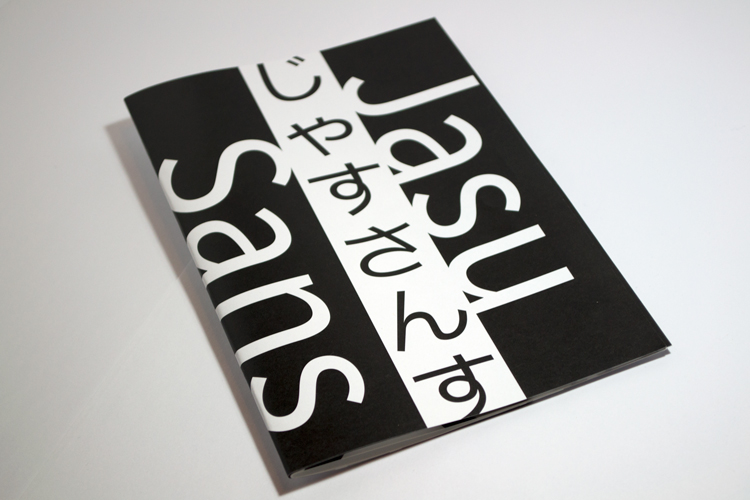One thing I have always strived to do is step outside the box, especially when there is a chance to learn something new. I had an opportunity to do just that while I was studying at York University and Sheridan College in the YSDN program. One of my classes I took was in Typeface Design. The objective of the course was to learn how to design our very own typeface that could be used every day. My professor for that course told us we were not limited to designing for our alphabet, so that got me thinking, “could I design a typeface in Kana?”
I have been practising Japanese on my spare time as I was studying; sadly I lived too far from York campus to actually take the 1 hour classes 3 days a week. Despite only using a textbook I had bought from Chapters, I had learned all the Hiragana characters very quickly. When you’re designing a typeface in a foreign language, it is important to know about the characters you’re creating.
As I was the only person in the class who had chosen to design Hiragana characters, I had a very different workflow from my classmates for the entirety of the semester. While my class was beginning with the “blueprint” letters of our alphabet (the letters whose shapes are adapted for most other letters in the alphabet), I had to improvise with the Hiragana. I had to do something I had never done before in studying Japanese—studying the aesthetic shapes of the characters and relationships they had with other characters in the alphabet. From doing this, I was able to draft out a workflow plan for when I’d complete designing each letter, based on their overall design.
To begin, I took a Japanese typeface that was already a default on the Mac computer and created outlines in my typeface file. By doing this, I had a skeleton to work with. Since the typeface I was using had a very different stroke weight and shape from what I wanted in my new typeface, most of the work was matching my desired stroke weight (based on Source Sans) and then evening out the result to have well-rounded characters.

Using Glyphs on Mac, I designed the 68 primarily used Hiragana characters by the end of the semester. These characters were exported as a font file and tested multiple times throughout the process to perfect the spaces between the characters in any practical order. Since I knew basic Japanese phonetic language structure, I was able to type words and sentences and see the relationships between letters as they would typically be placed. This brings me to another huge difference between my assignment and that of most of my other classmates. Kana has uniform spacing. All the characters are the same width, just like letters on a typewriter. Not all the characters were easy to set up this way on the Glyphs grid. For instance, characters like く (ku), よ(yo) and て (te) did not fill up much space within their boundaries like other characters. However, it is not something you can simply solve by adding a serif or two, like you can with “i” and “t” for our alphabet. Instead, I had to tweak the character so that its use of positive and negative space could be comparable to other characters. I also had the option of shifting them left and right within their boundary. This was important for cases involving them being juxtaposed with characters having ten ten and maru, like ず (zu), じ (ji) and ぱ (pa) that unavoidably have very little negative space to the right side of their boundaries.

Once I had finished fine-tuning all the characters, I was ready to create my type specimen. This is like the profile, the album of a typeface, a way to show off its features. For my specimen I wanted to utilize the bold qualities of the character strokes using only black and white. There was no sense in drawing any more attention through use of colour when the aesthetic look of the characters can be shown off with only 2 values. Deciding what to include with a limit of 12 pages including the front and back cover was a bit tricky. Especially when there was only criteria for 4 sections I had to include: idea behind the design, character set, list of features and how the type looks in different sizes. Any space left over in the book was completely open to us, so I did a bit of research in what else to include for a type specimen with Kana. I ended up finding a poem that includes every Hiragana character at least once. This was a great way to see just how well my typeface looked. It also made a great introduction. For the inside covers, I created collage-like illustrations with my characters all in different sizes. At the front of the book especially, this really created a feeling to draw the viewer in.

You can see the inside of this type specimen in more detail on my portfolio website.
Overall, I really enjoyed working on this project and I hope to continue to expand the typeface in the near future by including Katakana. Hopefully then, I can update this type specimen and showcase the entire Kana character set.
